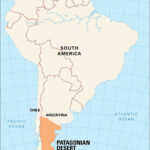The sun’s activity ebbs and flows in a fascinating cycle that directly influences the mesmerizing spectacle of the aurora borealis, or Northern Lights. Approximately every 11 years, the sun’s magnetic field undergoes a transformation, marked by variations in sunspot numbers. This cyclical pattern, known as the solar cycle, is key to understanding when and where the aurora might be most vibrant.
At the cycle’s low points, termed Solar Minimum, sunspots are scarce. Conversely, Solar Maximum, the cycle’s peak, sees a surge in sunspot activity. Scientists use the solar cycle to predict aurora activity because solar flares and coronal mass ejections, which fuel the aurora, are more frequent during periods of heightened solar activity. Solar maximum is often touted as the prime time for aurora viewing due to this increased activity.
However, it’s a misconception to believe that the aurora only appears during solar maximum. Even during the quieter solar minimum phases, coronal holes can persist for extended periods. These coronal holes are sources of solar wind, the very particles that interact with Earth’s atmosphere to create the aurora. Therefore, the sun continuously emits solar wind, ensuring that auroras remain visible throughout the entire 11-year solar cycle. You can witness the magic of the northern lights regardless of whether we are in a solar maximum or minimum.
Instead of solely focusing on the solar cycle phase, a more practical approach to aurora hunting is to prioritize location and timing. As long as you position yourself within the auroral oval – the region around the Earth’s magnetic poles where auroras are most commonly seen – on a clear night between September and April, your chances of witnessing the northern lights are promising. Prime locations within this oval include regions in Alaska, Canada, Iceland, Greenland, Norway, Sweden, and Finland.
Currently, there’s considerable excitement surrounding Solar Cycle #25, which commenced in 2020. Many scientists predict this cycle could be exceptionally strong, a forecast seemingly validated by the remarkable aurora displays observed in 2023 and 2024. While Solar Cycle 25 may offer enhanced aurora viewing opportunities, remember that clear skies and being within the auroral oval remain crucial factors for a successful northern lights experience. So, while the solar cycle adds an interesting dimension to aurora forecasting, your best bet to see the aurora borealis is to venture to high-latitude locations during the dark winter months, ready to marvel at nature’s light show, regardless of the sunspot count.

